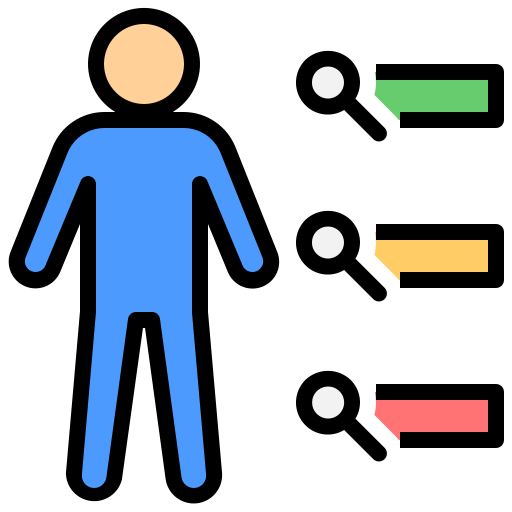
The Best Chronic Illness Resources 2024
The best resources for people with chronic illnesses in 2024 Published on April 25th 2024Written by Jesse Driessen There are so many different places you

The information shown on this page has been crowd-sourced anonymously from members of the Bearable community who live with ME/CFS and who have used Pacing as part of their self-management routine.
Pacing is a self-management strategy used to manage symptoms of Chronic Fatigue Syndrome (CFS), also known as Myalgic Encephalomyelitis (ME/CFS). It involves carefully balancing activity and rest to prevent the exacerbation of symptoms, particularly post-exertional malaise (PEM), which is a hallmark of the condition. PEM is a worsening of symptoms following physical or mental exertion that can last for days, weeks, or even longer.
Pacing is based on the concept of the “energy envelope” which represents the amount of activity your body can handle without triggering symptoms. Identifying personal limits is the first step. Keeping a symptom diary or using a tracking app can help recognize activity thresholds and patterns. Once limits are identified, tasks should be broken into smaller, manageable steps. For example, instead of cleaning the entire house at once, focus on one room at a time with planned breaks.
Planning activities and prioritizing essential tasks is also critical. Distributing tasks over multiple days rather than completing them in one go can help prevent overexertion. Scheduling rest periods—even before feeling fatigued—can also be beneficial in preventing PEM episodes.
One of the main benefits of pacing is avoiding the “boom-and-bust” cycle. This occurs when individuals overexert themselves on good days, only to crash and experience severe fatigue for days afterward. By maintaining a consistent activity level, pacing helps avoid these fluctuations. Using assistive tools, such as a shower chair or meal-prepping in advance, can also reduce physical strain. Setting boundaries—such as declining non-essential commitments—can help conserve energy and prevent burnout.
We asked members of the Bearable community – people living with chronic illnesses – to score and review the impact of pacing on their fatigue, well-being and health.

Some improvement
in fatigue
Rated 2.4 out of 5

Moderate improvement
in well-being
Rated 3.9 out of 5

Improved
some aspect of health
Reported by 95% of people
We asked members of the our community -people living with chronic illness – to share their experiences of using Pacing to managing fatigue.
“Pacing is the only thing that helped with almost all ME/CFS Symptoms. It means frequent/active resting before symptoms appear. I paced with the help of a heart rate monitor, never going above 50-60% of my max heartrate.”
“Take breaks throughout the day. If you’re doing a larger activity then take rest days before and after. Learn to listen to your body. If you feel able then do things. If you don’t, then stop and rest even if you have to rest for hours or days.”
“For me, pacing is something that needs to happen every day, all the time. It’s about accepting the necessity of listening to what your body needs and understanding that rest is vital and your day may not look like other people’s and that’s ok. It is not just valid, but it is fundamental to your QAL to value your own health and care – even when it makes you feel guilty, or selfish, or lazy.”
“You must go very slow and carefully at first. It might take a long time to get better.”
“Pacing is the only thing that helps people who suffer from Post Exertional Malaise or Post Exertional Symptom Exacerbation.”
We’ve built an app made by people with chronic illnesses for people with chronic illnesses. Every year, we help tens of thousands of people to feel more in control of their health & well-being.
Studies have shown that pacing is one of the most effective self-management strategies for people with CFS. Research highlights that individuals who adhere to pacing experience fewer PEM episodes, improved daily functioning, and better overall well-being. Unlike some controversial treatments, such as Graded Exercise Therapy (GET), pacing aligns with patient-reported outcomes and is widely endorsed by CFS organizations. Long-term studies suggest that consistent pacing can contribute to overall symptom stability and improved quality of life.
Pacing is not a one-size-fits-all approach, as every person with CFS has different energy limits. Some may find benefit in using the “spoon theory” to allocate energy throughout the day, while others might rely on structured rest periods. Tracking daily activities and symptoms can help refine an individual’s pacing strategy. Digital tracking apps and wearable devices can assist in monitoring energy levels and recognising patterns over time. The severity of CFS symptoms can also influence how pacing is applied, with individuals who are housebound or bed bound requiring even more careful energy management strategies.
Heart rate monitoring is an additional tool that some people with CFS use to manage energy expenditure. The idea is to avoid exceeding an anaerobic threshold, which could trigger PEM. By tracking heart rate, individuals can ensure they stay within a safe activity range. This method is particularly useful for those who experience sudden energy crashes without clear warning signs. Some experts suggest that heart rate monitoring may be particularly beneficial for individuals with more severe CFS who struggle to recognise early signs of overexertion.
Some individuals unknowingly push themselves too hard on good days, thinking they can “catch up” on lost time, which often results in severe symptom flare-ups. Others may set their activity levels too low, leading to unnecessary deconditioning. The key is finding a sustainable balance and gradually adjusting activity levels based on personal limits rather than external pressures. Medical professionals recommend tracking symptom fluctuations closely to refine pacing strategies over time.
Myalgic Encephalomyelitis/Chronic Fatigue Syndrome (ME/CFS) is a complex, chronic illness characterized by extreme fatigue that doesn’t improve with rest and worsens with physical or mental activity.
The condition affects multiple body systems, including the nervous, immune, and endocrine systems. ME/CFS can significantly impair daily functioning, often leading to a substantial reduction in physical and cognitive abilities.
Information sourced from the Mayo Clinic.
The exact cause of Myalgic Encephalomyelitis/Chronic Fatigue Syndrome (ME/CFS) remains unknown, but researchers believe it may develop due to a combination of factors. Viral infections, such as Epstein-Barr virus (which causes mononucleosis) and human herpesvirus 6, have been studied as potential triggers, as many people report developing ME/CFS after a severe viral illness. Immune system dysfunction is another possible factor, with some studies suggesting that people with ME/CFS may have an overactive or impaired immune response, leading to chronic inflammation and persistent fatigue.
Hormonal imbalances have also been explored, particularly irregularities in the hypothalamic-pituitary-adrenal (HPA) axis, which regulates stress responses and energy levels. Some researchers believe disruptions in this system may contribute to the characteristic exhaustion seen in ME/CFS. Additionally, genetic predisposition may play a role, as cases sometimes cluster in families, though no specific gene has been identified as the cause. While these factors are still being studied, researchers agree that ME/CFS is a complex condition likely influenced by multiple physiological and environmental triggers.
Diagnosing Myalgic Encephalomyelitis/Chronic Fatigue Syndrome (ME/CFS) is complex because there is no single test to confirm the condition. Instead, doctors rely on a combination of symptoms and medical history while systematically ruling out other illnesses with similar presentations, such as autoimmune diseases, sleep disorders, and mental health conditions. The diagnostic criteria often include persistent, unexplained fatigue lasting at least six months, post-exertional malaise (PEM), unrefreshing sleep, and cognitive impairments or orthostatic intolerance. Because these symptoms overlap with many other conditions, getting a definitive diagnosis can take years.
One of the biggest challenges in diagnosing and treating ME/CFS is the lack of understanding and recognition within healthcare systems. The exact cause of the illness remains unknown, making it difficult to develop targeted treatments. Many patients struggle to have their symptoms taken seriously, leading to misdiagnoses or delays in appropriate care. Additionally, the fluctuating nature of ME/CFS symptoms can make it difficult for both patients and healthcare providers to assess severity. While research is ongoing, awareness and better diagnostic tools are still needed to improve outcomes for those living with the condition.
The information on this page is collected from our community of hundreds of thousands of people who live with and manage multiple chronic health conditions and disorders. If you’ve had your own experience with using pacing to manage ME/CFS, we’d love for you to submit your own review.
The ratings and reviews on this page are updated monthly and we’ll incorporate your feedback into the next update. To submit your own review of pacing on CFS, please complete the form linked below.

The best resources for people with chronic illnesses in 2024 Published on April 25th 2024Written by Jesse Driessen There are so many different places you

How Laura uses Bearable to manage Long Covid. I started using Bearable because I have had long covid for two years now. In the beginning

With World Mental Health Day approaching, James (Bearable’s lovely CEO) asked me (Natasha Lipman), to write a little something about the impact that living with